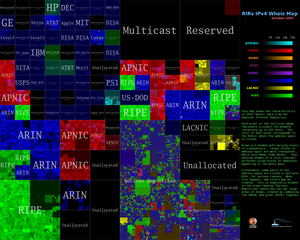Extracts from three days of presentations :
Asia Pacific subsea systems - adding IP routing
The presentation which I really wanted to see but missed was the Pacnet material about the changes they are making to their Asia-Pac subsea cable systems. They are going to install routers at the cable landing stations in Hong Kong, Korea and Japan so that traffic that comes in from the US doesn't have to backhaul to the city point of presence (as it does now). In a separate press release PACnet say they are going to add hosting centers next to the landing stations, using the existing power and space capacity.
NewAsia_IP
Pacnet press release
RBridges
This effort seems to have made a lot of progress since I was somewhat involved with it before leaving Cisco in 2006. There's nothing about product roadmaps in the presentation, so it's not clear how much adoption it will get. It is worth reading if you have an interest in improved bi-sectional bandwidth in data centers.
Rbridge
BCP docs collection
Aaron Hughes gave a lighting talk about a useful looking project to collect and maintain Best Current Practices documents - this is the sort of thing that one would think already existed, but it doesn't seem to fit in any of the current charters for Nanog, ARIN, or the IETF.
BCP docs project
BGP updates
There were a set of presentations on Tuesday afternoon about modifications and improvements to BGP. Of these, Dave Ward's introduction to Add Paths is the place to start.
It's good to see some impetus towards reducing BGP convergence times, having tried to get some work moved forward on this in 2001 - yes, Dave came to those meetings, when we were both at Cisco. BGP is so fundamental to Internet connectivity that changing anything about it, for even minor improvements, takes huge amounts of patience and persistence as well as technical background.
"ADD-PATH IN A NUTSHELL
Add a path identifier as part of the NLRI (Network Layer Reachability Information)
- Very similar to Route Distinguisher in RFC 2547/4364 VPNs, but
applicable to all address families"
Add-Path introduction
IX cost analysis model
If you are deciding whether it's worth connecting to an Internet Exchange point, Marty Hannigan's lightning talk provides a model for the cost analysis.
IX model
DNSSEC
The signed root is due to go live on July 1 2010.
Keith Mitchell described the deployment plan for F-root, Duanne Wessels presented analysis of the changes in traffic patterns for the completed deployments at L-root and A-root. Current deployments are using DURZ, a deliberately undeployable root zone, for testing during the transition. OARC, (the DNS Operations, Analysis and Research Centre) has developed a test to run to see whether DNSSEC packets are likely to cause issues for your network.
F-root DNSSEC deployment
Traffic analysis for DNSSEC transition
Routing history tool
The Wednesday lightning talks were about tools - the most useful of the RIPE labs tools looks to be a new 'resource explainer' - for looking at current and past history of routing for a particular IP address.
Other RIPE lab tools
ARIN are building a new WhoIs tool,as a RESTful web service - it's not quite in production yet, but the demo is at http://whoisrws-demo.arin.net/ui
The quality of the remotely accessible audio and video for this meeting was not nearly so good as that for Nanog47, in Dearborn. That means one loses the sense of being 'almost in the audience' - and interferes significantly with the ability to appreciate the content. The next meeting is in San Francisco, June 13 - 16 2010, which should make it easier to go in person.
References
Agenda - links to all the pdfs, and will get links to video
http://www.nanog.org/meetings/nanog48/agenda.php
